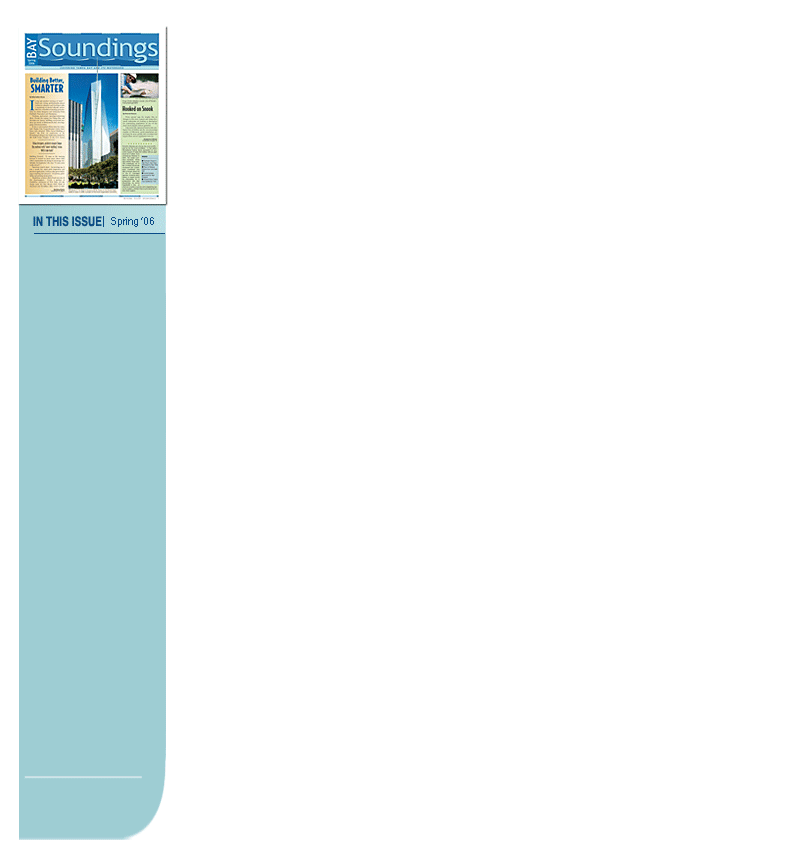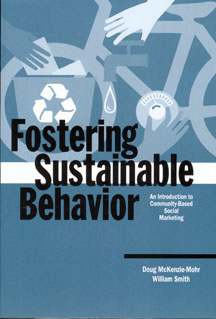

 |
||||||
 |
||||||
How to Become a Change Agent:
Lessons from Social Marketing, Ideas for Environmental Educators
By Mary Kelley Hoppe
The mild-mannered Canadian is a man on a mission. He wants to transform government and non-profit staffers peddling public information into change agents who know how to evaluate if the message and methods are making a difference – and, if not, what to do about it.
The audience, assembled at Leu Gardens in Orlando in March to hear environmental psychologist Doug McKenzie-Mohr, was all ears. McKenzie-Mohr is author of Fostering Sustainable Behavior, a book that tells how to identify and overcome barriers to behavior change. The meeting was organized by the Southwest Florida Water Management District to give community partners a chance to learn more about community-based social marketing.
 |
|
As consumption patterns threaten to outstrip the Earth’s ability to support humanity and other species, one thing becomes clear: that we cannot continue to live in the same old ways. In North America, initiatives on the road to sustainability include programs to increase energy efficiency, reduce waste and water consumption, and alter transportation patterns. But changing our lifestyles to create a sustainable future will require yet more sweeping changes in public behavior. While conventional marketing can help create public awareness, social marketing identifies and overcomes barriers to long-lasting behavior change. Fostering Sustainable Behavior details how to uncover the barriers that prevent people from engaging in sustainable behaviors, and provides a set of tools that help foster behavior change. It also describes how to design and evaluate programs. — from Fostering Sustainable Behavior |
In a nutshell, CBSM is based on social sciences research that demonstrates that behavior change is most effectively achieved through community-level initiatives that focus on eliminating the barriers and enhancing the benefits associated with a behavior change. Problem is, few practitioners take the time or know how to research the barriers and benefits, or utilize social marketing tools.
“With more and more responsibilities being added to our plates, we have to find ways to do our job more efficiently and effectively,” says Beth Bartos, a project manager in the district’s communications department. “That’s what drew me to social marketing.”
McKenzie-Mohr boils CBSM down to four steps:
Applied together to get people to conserve water or recycle, for example, social marketing can lead to lasting behavior change – or, at the very least, save a group from continuing to pour money into an ineffective campaign.
The district is applying McKenzie-Mohr’s model in several of its pilot programs, including a Hillsborough River watershed project to promote Florida-friendly landscaping. “We’re actually training ourselves in the process,” says Bartos.
Homes in the pilot area have already been audited by participating local governments to identify water usage. Next, the project team will evaluate the audit and select the two or three actions they feel will produce the biggest bang for the conservation buck. After that, they’ll research the barriers and benefits associated with those actions, and then design an appropriate strategy. A control group will provide a basis for comparison.
“Once we have some successful pilots and templates, we can share them with our partners to implement,” she says.
Just how do organizations go about identifying barriers and benefits to change? McKenzie-Mohr’s book discusses three tools: case studies, focus groups and surveys – and when and how to best apply them. A growing body of case studies on a wide variety of topics provide insight into what works, what doesn’t and why .
Focus groups let researchers probe an issue directly with residents of a community, but can be costly and must be carefully designed. McKenzie-Mohr says the ideal focus group includes six to eight paid participants randomly selected from a target audience. Participation must be easy, and questions must be clearly defined, jargon-free and relevant.
Still, he says, focus groups involve only a small number of people – and the lower the participation, the less the feedback is indicative of a target audience. By themselves, focus groups don’t provide enough information on which to base a social marketing campaign.
Surveys provide another means for gathering information, but mail-in surveys have especially low return rates, calling into question their validity. Surveys conducted in person are far better but expensive and time-consuming. Phone surveys still have the most advantages, but refusals are still a problem.
Tools for Behavior Change
McKenzie-Mohr’s book also details a number of “tools” for promoting behavior change, which are best used in combination. They are:
Learn more about community-based social marketing at www.cbsm.com. McKenzie-Mohr’s site features an online guide that illustrates how to use social marketing principles to design and evaluate programs that foster sustainable behavior, plus case studies and a listserv for sharing information. Visitors must register to access resources but registration is free.

Fisheries Update: Hooked on Snook, Drops in Red Drum
Profile: Artist Diane Peebles & Researcher Ernst Peebles
Ports Prepare for Heavy Weather
How to Become a Change Agent: Lessons in Social Marketing
Biomimicry: Borrowing Ideas from Nature
Local Photographers Help Celebrate Estuary Program's 15th Anniversary
Special Insert: Pinellas County Summer Camps & Special Events